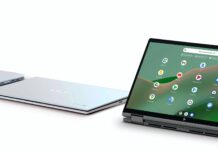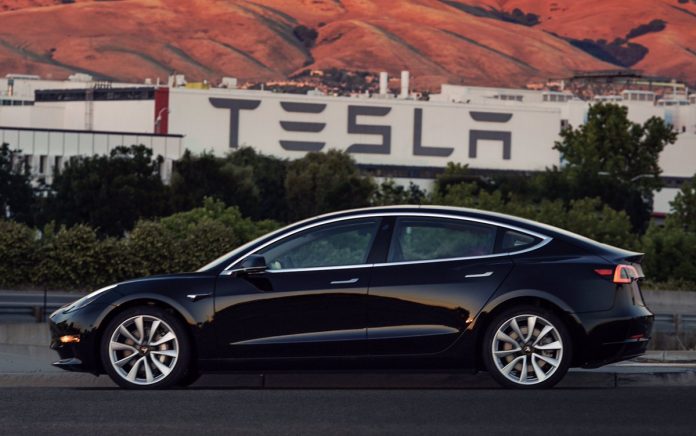Tesla last November ended an unusual policy that prohibited U.S. leasing customers from buying their cars at lease-end.
The policy started in 2019, when Tesla announced that customers could lease its mass-market Model 3 sedans but would have to return them, at the end of the lease, for use in Tesla’s planned “robotaxi” network.
“You don’t have the option of buying,” Chief Executive Elon Musk said at an investor gathering in California in April 2019. “We want them back.”
“Next year, for sure,” he added, “we’ll have over 1 million robotaxis on the road.”
None of that would prove true. Despite repeated promises, the robotaxis never came. Tesla instead found an unusually lucrative way to make money by flipping many of the off-lease cars to new buyers, according to four people familiar with Tesla’s retail operations.
Rather than storing the used cars – a fast-depreciating asset – Tesla started adding features to them through software upgrades. It then sold the vehicles to new customers who would pay thousands more than lease-end buyers would have, the people said.
The practice was an easy way to “jack up the price” of the used vehicles, said one of the people, who asked not to be identified.
Tesla and Musk didn’t respond to requests for comment for this story.
Although counter to what Musk said publicly – and descriptions Tesla gave on its website regarding lease terms – the tactic appears to have been legal. Still, the practice denied lessees the industry-standard option of buying their vehicles and misled them for years about why.
It also perpetuated the myth among investors that Tesla was near fully autonomous driving technology. That belief has helped buoy Tesla stock, whose value has far outpaced current earnings and made it the world’s most valuable automaker.
Throughout the industry, lease contracts typically allow customers to pay monthly to drive a new car for a specified period of time, often between two and four years. The lessee doesn’t own the vehicle and must return it to the dealer when the lease expires. In almost all cases, customers can choose to buy the vehicle at lease-end or earlier.
Since 2019, Tesla financial statements show, the company has leased to customers worldwide more than 314,000 vehicles, or 4.4% of its total deliveries. It isn’t clear whether the no-buy policy applied anywhere outside the United States.
The policy was well suited for the years after the onset of the COVID-19 pandemic, when vehicle inventories tightened and car prices spiked. More recently, as demand has plummeted – in part because of some consumers’ distaste for Musk’s right-wing political activities – buyers aren’t as enthusiastic for used Teslas.
In making upgrades to its off-lease vehicles, the people familiar with Tesla’s retail operations told Reuters, the company often added “Full Self-Driving” software, which it has sold separately for up to $15,000 and now sells for $8,000. It also added “acceleration boost,” an update that can make the car speed up faster, which it sells separately for $2,000.
After starting the no-purchase policy with Model 3 leases, Tesla expanded it to leases for all models. Until the recent reversal, its web site said Tesla vehicles delivered after April 15, 2022 “are not eligible for purchase,” and that “Model 3 and Model Y leases are not eligible for purchase regardless of delivery date.”
Then, last November 27, Tesla’s North America account posted on X, Musk’s social media platform: “Lease buyout now available” for new contracts. The company also updated its leasing webpage to say leased vehicles “may be eligible for purchase.”
For some former lessees, the discovery has been disappointing.
At the start and end of his three-year Model Y lease, Joe Mendenhall told Reuters, Tesla staff said they needed the car back for the robotaxi fleet. But last year he learned Tesla sold the car once he returned it.
“Lies about not being able to buy out my lease,” the Indianapolis marketing entrepreneur wrote on X. “The car gets sold at auction, not turned into a robotaxi like I was told. Slow clap @elonmusk.”
CAUGHT HOLDING THE BAG
Tesla’s story about keeping used cars for robotaxis fits a long pattern of unfulfilled promises to deploy self-driving vehicles – most recently announced for June in Austin, Texas.
Every year since 2016, Musk has promised self-driving Teslas would arrive no later than the following year. In 2019, when Tesla first offered leasing for the Model 3, Musk told podcast host Lex Fridman that the ability to add autonomous-driving software would make every used Tesla an “appreciating asset.”
Some investors have referenced the alleged inventory of leased vehicles as a promising strategy. As recently as October – ahead of a Hollywood event where Tesla displayed a concept “Cybercab” robotaxi – Ark Investment Management, long bullish on Tesla stock, said the off-lease inventory could help quickly ramp-up an autonomous ride-hailing service.
“To jumpstart the service, it could deploy a fleet of existing Model 3 and Model Y vehicles, including those coming off lease,” Ark said in a research note at the time. Sam Korus, a director of research at Ark, this week said that Tesla, even without the off-lease cars, could still have other options, including new or third-party vehicles.
Others have long had doubts. When Tesla in 2019 announced it was prohibiting lease purchases because of its robotaxi plans, Evercore ISI analysts reacted in a research note: “uhmmm, what??” The announcement “is an indication that Tesla believes their ride-hailing network is going to be a viable business in three years,” the analysts added. “Put us in the extremely skeptical camp.”
As a rule, auto dealers avoid holding used inventory because used cars generally depreciate rapidly. Michael Minick, a former Tesla sales representative and one of the people familiar with the sale of formerly leased cars, told Reuters the company wouldn’t allow cars to “just sit on lots and lose value.”
“I knew that wasn’t true,” added Minick, who was among thousands of Tesla employees laid off during a restructuring last year.
For most car companies, offering lease buyouts is a “no-brainer” because dealers don’t have to find a new buyer when a lease ends, said Joseph Yoon, consumer insights analyst at automotive data provider Edmunds. Now that used Tesla values are “kind of tanking,” Yoon said, the company most likely ended the lease-end-purchase ban to avoid being “caught holding the bag.”
As Tesla models age and face rising competition from other electric vehicle makers, the cars now lose value faster than almost any other vehicle. An analysis by CarGurus, a used-car sales and data service, found average selling prices of used Teslas have fallen 7.6% over the last year, compared to a decline of 0.8% for a composite index of all brands. Prices for Tesla’s Cybertruck have plunged 46% over the last year, while Model Y prices fell 14.1%.
During Tesla’s January earnings call, Vaibhav Taneja, the company’s chief financial officer, blamed “lower profit from used car business” as a reason for declining margins at one of its units. Unlike almost all other automakers with U.S. sales, Tesla owns and operates its own dealerships.
At dealerships before the lease policy changed, one of the people familiar with Tesla’s retail operations said, customers sometimes asked why used prices were so similar to those of some new models. Salespeople would cite the software upgrades to those interested in buying.
For those seeking leases, they continued saying the cars would be used for robotaxis at lease-end. The explanation never changed, the person added, because until November the company never deviated from it.
Marshall Distel, a transportation planner from Vermont who leased a Model 3 in 2023, said he understood from researching Tesla’s policies that he would have to return the car. At the time, he said, he thought a buyout option would have been nice.
Now, he has no interest in buying anything from Musk, whose high-profile activities as an advisor to U.S. President Donald Trump have alienated some consumers. “I love the car, I just don’t like what has been going on at the top with the CEO,” Distel said. “I don’t want to be associated with that any more.”























